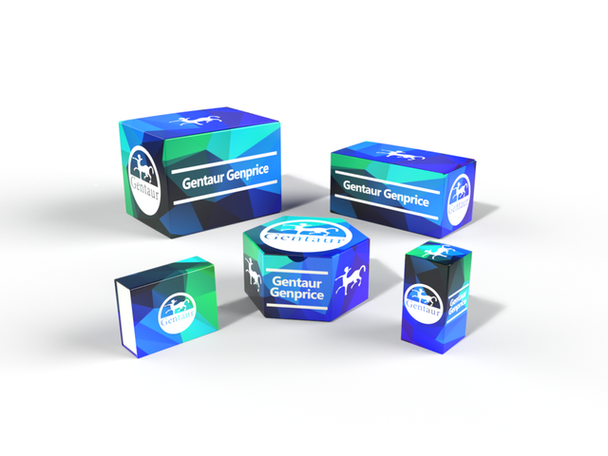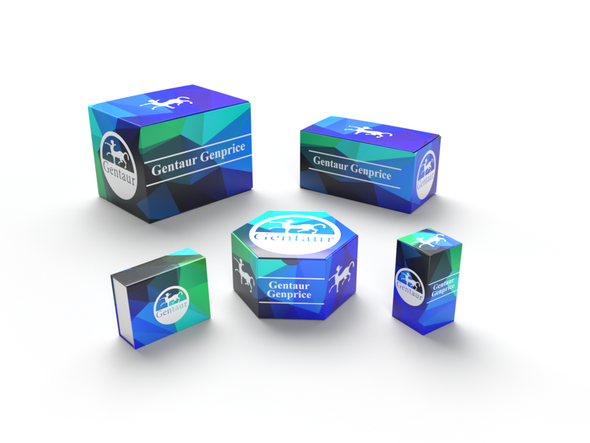749
Human Basic salivary proline-rich protein 2 (PRB2) ELISA Kit | KTE61188
- SKU:
- 749-KTE61188
- Availability:
- Usually ships in 5 working days
Description
Human Basic salivary proline-rich protein 2 (PRB2) ELISA Kit | KTE61188 | Gentaur UK, US & Europe Distribution
Application: This Human Basic salivary proline-rich protein 2 (PRB2) ELISA Kit employs a two-site sandwich ELISA to quantitate PRB2 in samples. An antibody specific for PRB2 has been pre-coated onto a microplate. Standards and samples are pipetted into the wells and anyPRB2 present is bound by the immobilized antibody. After removing any unbound substances, a biotin-conjugated antibody specific for PRB2 is added to the wells. After washing, Streptavidin conjugated Horseradish Peroxidase (HRP) is added to the wells. Following a wash to remove any unbound avidin-enzyme reagent, a substrate solution is added to the wells and color develops in proportion to the amount of PRB2 bound in the initial step. The color development is stopped and the intensity of the color is measured.
Detection Method: Colorimetric
Conjugate: N/A
Sample Type: Cell culture supernatants#Serum#Plasma#Other biological fluids
Assay Type: Multiple steps standard sandwich ELISA assay with a working time of 3-5 hours. It depends on the experience of the operation person.
Kit Component: • Human Basic salivary proline-rich protein 2 microplate
• Human Basic salivary proline-rich protein 2 standard
• Human Basic salivary proline-rich protein 2 detect antibody
• Streptavidin-HRP
• Standard diluent
• Assay buffer
• HRP substrate
• Stop solution
• Wash buffer
• Plate covers
Features & Benefits: Human Basic salivary proline-rich protein 2 (PRB2) ELISA Kit has high sensitivity and excellent specificity for detection of Human PRB2. No significant cross-reactivity or interference between Human PRB2 and analogues was observed.
Calibration Range: Please inquire
Limit Of Detection: Please inquire
Usage Note: • Do not mix components from different kit lots or use reagents beyond the kit expiration date.
• Allow all reagents to warm to room temperature for at least 30 minutes before opening.
• Pre-rinse the pipet tip with reagent, use fresh pipet tips for each sample, standard and reagent to avoid contamination.
• Unused wells must be kept desiccated at 4 °C in the sealed bag provided.
• Mix Thoroughly is very important for the result. It is recommended using low frequency oscillator or slight hand shaking every 10 minutes.
• It is recommended that all samples and standards be assayed in duplicate or triplicate.
Storage Instruction: The unopened kit should be stored at 2 - 8°C. After opening, please store refer to protocols.
Shipping: Gel pack with blue ice.
Precaution The product listed herein is for research use only and is not intended for use in human or clinical diagnosis. Suggested applications of our products are not recommendations to use our products in violation of any patent or as a license. We cannot be responsible for patent infringements or other violations that may occur with the use of this product.
Background: The Ps proteins of saliva are so called because they are parotid size variants, i.e., variants in the size of parotid salivary protein. The polymorphism is determined by 1 unexpressed and 2 expressed alleles at an autosomal locus. The electrophoretic polymorphism is manifested by apparent differences in molecular weights between the Ps proteins which are glycosylated. Ps and Pm are closely linked to Pr, Pa, Db, and G1. Goodman and Karn (1983) presented evidence supporting the conclusion of Azen and Denniston (1980) that there is a molecular weight difference between the 2 allelic proteins Ps-1 and Ps-2. The difference appears to be due to an extension of the Ps-2 chain (presumably at its COOH-end) . Minaguchi et al. (1988) described new variants.
Alternative Names: PRB2; PRPPRB1; Ps; cP7; proline-rich protein BstNI; subfamily-2 (parotid size variant) ; salivary proline-rich protein 2
Search name: PRB2; PRPPRB1; Ps; cP7; proline-rich protein BstNI; subfamily-2 (parotid size variant) ; salivary proline-rich protein 2
Tag: PRB2










